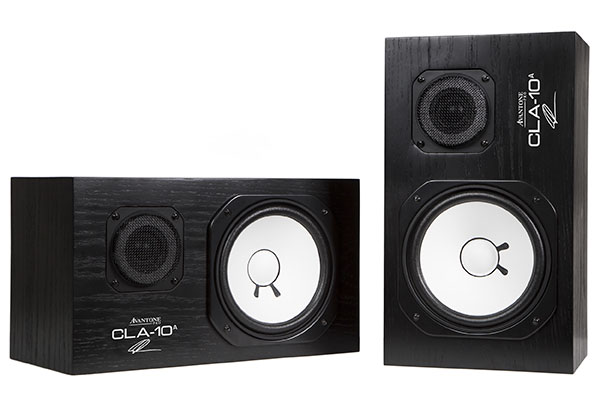Avantone Pro Launches Cla-10a Active Studio Monitors

Avantone Pro has announced the availability of its CLA-10A - an active studio monitor system following last year’s CLA-10 passive studio monitor and complementary CLA-200 studio reference amplifier.
The CLA-10A active monitoring system shares the same 35mm AV10-MHF high frequency silk dome-based tweeter and custom-designed 180mm AV10-MLF low-frequency driver - based on paper cone construction with pulp material that performs as closely as possible to the original by being press formed rather than die cut for tonal consistency - found in the CLA-10, as well as its cabinet construction.
The CLA-10A boasts a rear-mounted VTPC (Variable Tissue Paper Control) knob that allows users to simulate any version - from the vertical ‘m’ model to the horizontal ‘Studio’ version and everything in-between. Better still, this tone control effectively enables each user to choose the tweeter brightness that best serves their individual needs.
Avantone Pro’s designers utilized a linear power supply to deliver 200W of Class A/B output. Obviously, a heat sink is required to do so. So, it weighs more as a result.
The CLA-10A uses a monolithic integrated circuit Class A/B amplifier with wide voltage range and high current-capable output. Operating in Parallel Mode with two devices ganged together to deliver higher output power into low impedance loads makes for better thermal load performance at high power. At low power, THD (Total Harmonic Distortion) is 0.005%; at rated load it is 0.1%.
The circuit uses a mixed bipolar MOS high-voltage technology called BCDII 100/120, which avoids secondary breakdown phenomena by handling high-current output without unwieldy circuit complexity and external components.
Reprtedly, this system itself is being run at +/-40 VDC, yielding 200 watts RMS at 1kHz into 8 ohms. Obviously, rather than use an Switch Mode Power Supply with the associated noise that entails, Avantone Pro opted to take a traditional design route, remaining with a linear power supply. So, the power supply itself uses a toroidal transformer to create the classic performance of an A/B amplifier.